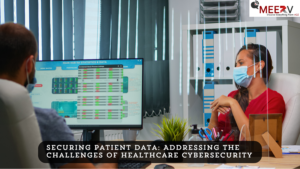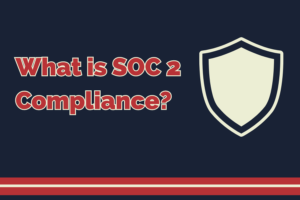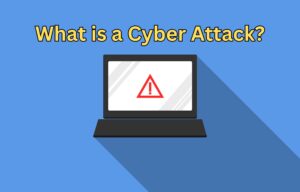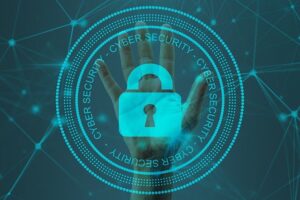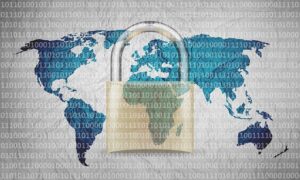A Quick Look at the Cybersecurity Standards and Frameworks

All organizations must take steps to prevent cybercrime and security breaches, but determining which cyber security measures to prioritize can be difficult. Also, with developing and sophisticated cyberattacks, only one security measure may not be as useful as you think. However, since they are comprehensive and effective cybersecurity standards and frameworks can do the job.
That is why these standards and frameworks are gaining popularity among organizations. Moreover, all firms, regardless of size, industry, or sector, can benefit from cybersecurity standards and frameworks. In a world where cyber health is vital, understanding these measures plays an important role.
So, in this article, we will take a look at some of the most common cybersecurity standards and frameworks, how they work and what they offer. But first, let’s get started with a brief explanation of standards and frameworks.
What are Cybersecurity Standards and Frameworks?
Cybersecurity standards are statements that outline what must be accomplished in terms of security outcomes in order to meet an organization’s declared security goals. The standard does not usually specify how it will be implemented or what solutions will be employed to achieve it. Instead, these tasks should be defined in subsequent plans and operational procedures designed to apply the standard at a certain time.
And In essence, a cybersecurity framework is a set of rules, principles, and best practices. A framework can provide a flexible approach to addressing cybersecurity, including its impact on the physical, cyber, and human components. A framework’s systematic, adaptive, repeatable, and successful approach assists users and administrators of essential infrastructure in managing cybersecurity risks.
Cybersecurity Standards And Frameworks
As explained, these standards and frameworks essentially offer a variety of services to prevent data breaches, cyberattacks, phishing attacks, and other types of cyber threats. A framework may be deployed in phases and hence modified to match the demands of every company.
The Framework is meant to complement, rather than replace, an organization’s cybersecurity program and risk management forms. To understand how this management works you can check NordLayer’s comprehensive article (https://nordlayer.com/blog/what-is-security-compliance-management/).
With that all said, let’s take a look at some of the most common cybersecurity frameworks and standards.
1- NIST
The National Institute of Standards and Technology (NIST) is a government-funded organization that has issued various cybersecurity guidelines. The NIST Cybersecurity Framework, NIST 800-53, and NIST 171 are all available. While these three frameworks have many similarities, there are also slight variances in structure and controls due to their different use cases.
The NIST Cybersecurity Framework is the most comprehensive of these frameworks, and it is intended to be used by any enterprise interested in developing a cybersecurity program. The framework’s security controls are divided into five main components;
- Identify: By identifying risks and recording where sensitive data is maintained your company may make sure that measures are in place to safeguard the most important business operations and data.
- Protect: The protect role entails putting technology in place and developing processes to ensure that data is adequately protected.
- Detect: The NIST Cybersecurity framework’s Detect function includes rules that ensure your business discovers possible issues as soon as they happen.
- Respond: Controls in the response function ensure that your company can respond to a cybersecurity problem quickly and effectively.
- Recover: Recover function offers strategies for restoring critical functions and services, as well as a list of temporary security controls to put in place as soon as your systems have been affected by a cybersecurity incident.
2- ISO/IEC 27001
ISO/IEC 27001 is an information security framework published as a joint framework by the International Organization for Standardization and the International Electrotechnical Commission. The ISO/IEC 27001 standard aims to define the standards for a security management system (ISMS).
Organizations utilize the ISO/IEC 27001 framework to manage the security of assets such as financial information, employee details, intellectual property, and information provided by third parties. To be certified as ISO 27001-compliant, a company must show the auditor that it is following the “PDCA Cycle,” as defined by ISO.
- Plan: Establishing the ISMS policy, objectives, processes, and procedures linked to risk management and information security enhancement in order to produce results that are consistent with the organization’s overarching goals and policies.
- Do: Policy, controls, processes, and procedures of the ISMS should be implemented and used.
- Check: ISMS monitoring and review, with process performance measured against policies and objectives.
- Act: The ISMS should be updated and improved. Following the completion of the ISMS internal audit, take corrective and preventative actions to guarantee that your organization continues to improve.
3- CIS — Center for Information Security
The CIS Framework was created in 2008 to assist small and medium-sized businesses in dealing with complicated cybersecurity regulations. Controls in the CIS Framework are divided into three areas. Basic controls, Foundational controls, and Organizational controls are the three types of controls.
Controls from CIS are designed to be easily applied to any industry or sector, including healthcare, retail, banking, and government. This organization uses benchmarks, or guidelines, that are based on widely recognized standards like NIST and HIPAA. It both helps businesses to comply with security standards and provides alternative basic security setups for organizations that do not require compliance but still wish to improve their security.
4- HIPAA —- Health Insurance Portability and Accountability Act
HIPAA is a cybersecurity framework that mandates healthcare institutions to set procedures for safeguarding and protecting the privacy of electronic health information. Companies in the healthcare sector must undertake risk assessments to manage and identify new risks, in addition to showing compliance with cyber best practices — such as educating workers — as required by HIPAA.
As We Close
In today’s digital world, cybersecurity frameworks offer organizations with the critical security requirements they need to function successfully and safely. Each security framework has its own set of strengths and difficulties, as well as diverse ways to benefit businesses. Adopting and finding the best-fit framework requires research, resource, and commitment. However, be sure it is worth it.


